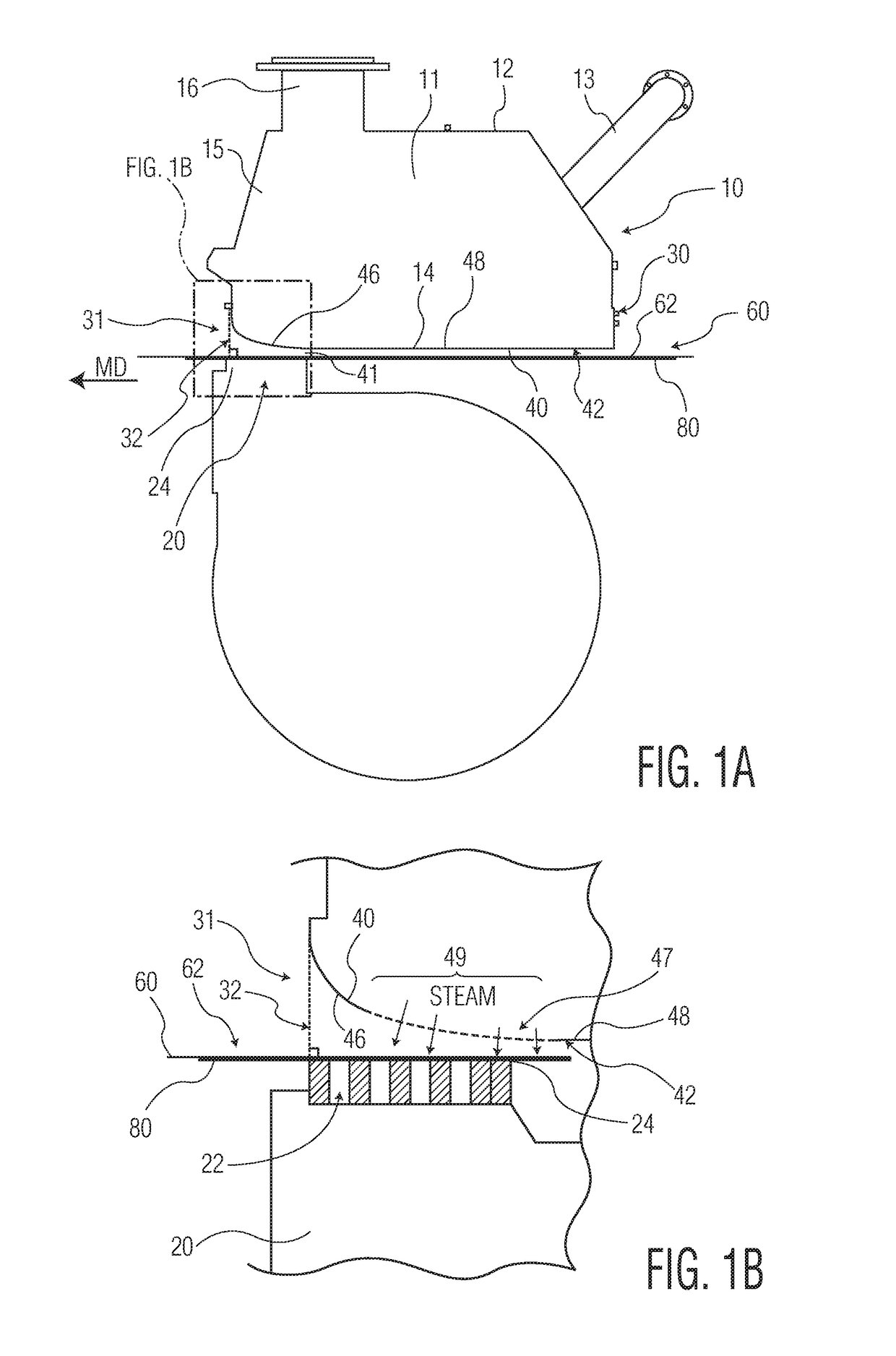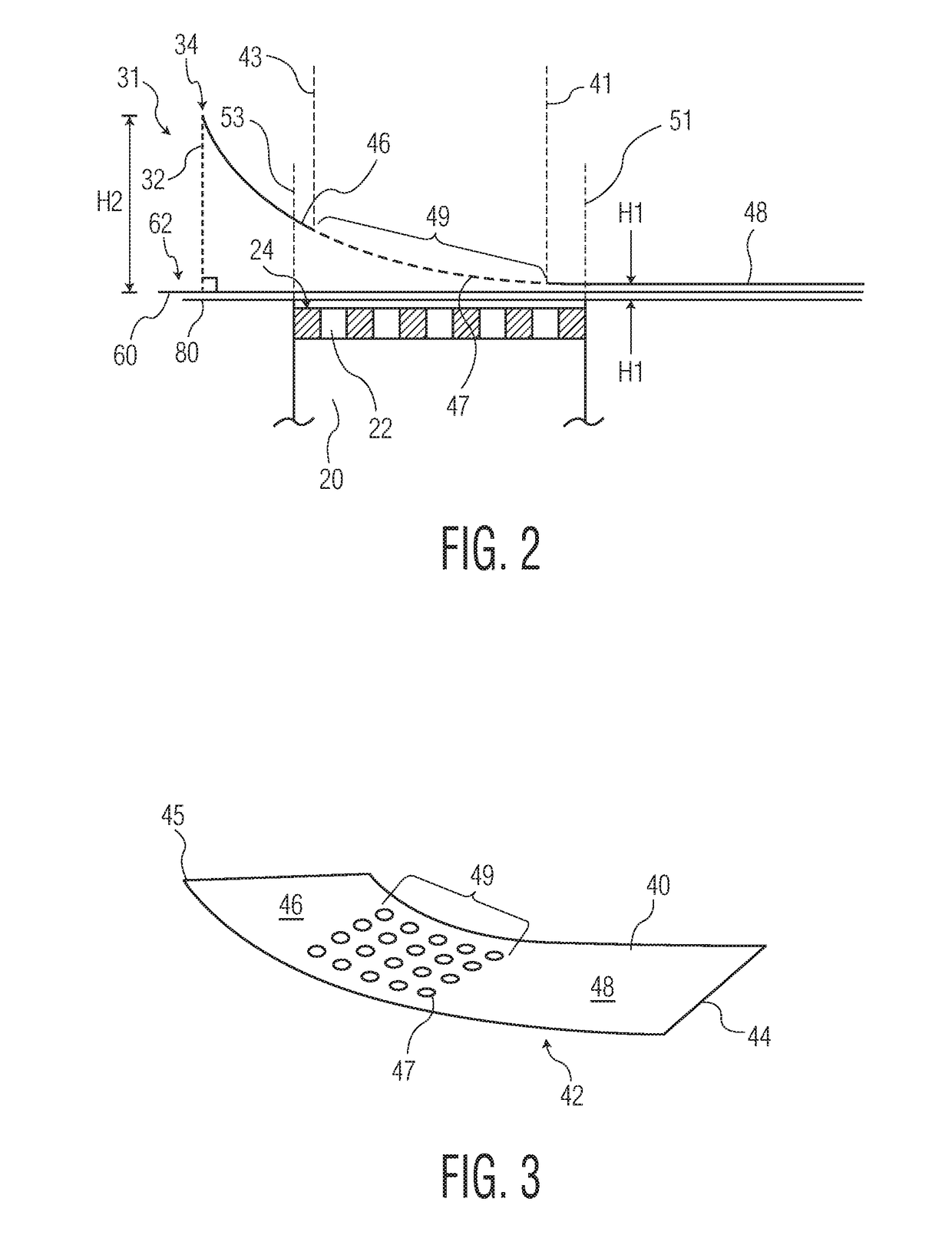Fibrous web dewatering appartus and method
a fibrous web and fibrous technology, applied in the field of fibrous web dewatering appartus and method, can solve the problems of reducing the control of dewatering, reducing the moisture uniformity across the fibrous web, and reducing the capacity of paper machines, so as to improve the uniformity, and reduce the turbulence of the machine room.
- Summary
- Abstract
- Description
- Claims
- Application Information
AI Technical Summary
Benefits of technology
Problems solved by technology
Method used
Image
Examples
Embodiment Construction
[0018]As is common in the art, the instant vacuum dewatering apparatus comprises a steam box which impinges steam onto a fibrous web, and more particularly a wet fibrous web comprising wood pulp fibers and water, supported on a travelling papermaking belt. The steam heats the water in the web causing its viscosity and surface tension to be reduced. The heated water, with its reduced viscosity and surface tension, may be removed from the web by a vacuum dewatering apparatus. In this manner, in one particular embodiment, the steam box of the present invention may be paired with a vacuum box to partially dewater a fibrous web being conveyed on a papermaking belt.
[0019]Generally the steam box of the present invention is useful in the manufacture of fibrous products, and particularly tissue products having basis weights less than about 100 grams per square meter (gsm) and more preferably less than about 70 gsm, such as from about 10 to about 100 gsm and more preferably from about 15 to a...
PUM
 Login to View More
Login to View More Abstract
Description
Claims
Application Information
 Login to View More
Login to View More - R&D
- Intellectual Property
- Life Sciences
- Materials
- Tech Scout
- Unparalleled Data Quality
- Higher Quality Content
- 60% Fewer Hallucinations
Browse by: Latest US Patents, China's latest patents, Technical Efficacy Thesaurus, Application Domain, Technology Topic, Popular Technical Reports.
© 2025 PatSnap. All rights reserved.Legal|Privacy policy|Modern Slavery Act Transparency Statement|Sitemap|About US| Contact US: help@patsnap.com


